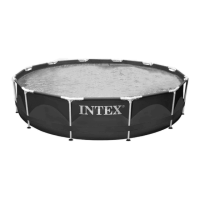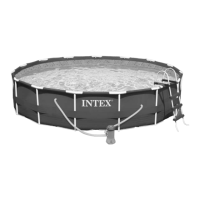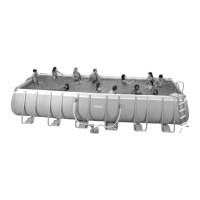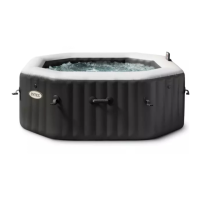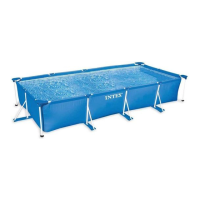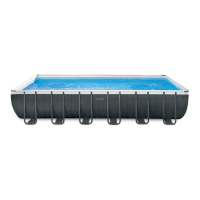Troubleshooting
30
Problem Possible cause Solution
The water turns
blue, brown or
black after the
initial chlorine
treatment.
• Copper, iron or mag-
nesium in the water
is oxidising because
of the chlorine added.
That is normal for many
water supplies.
− Check that the pH value is
correct.
− Allow the pump to run until
the water is clear.
− Change the filter cartridge
regularly.
The water is cloudy
or milky.
• “Hard water” because
the pH value is too high.
• Chlorine content is too
low.
• Foreign substances in
the water.
− Adjust the pH value.
− Consult your specialist pool
dealer about treating the
water.
− Check the chlorine content.
− Clean or change the filter
cartridge
21
.
The water level is
lower in the morn-
ing than it was the
previous evening.
• There is a slit or hole in
the pool liner
1
or the
hose.
• The hose clips
22
have
not been tightened.
− Try to repair the hole with a
special adhesive kit.
− Tighten all of the loose hose
clips.
− Replace the pump hoses
23
.
Dirt or sand on the
base of the pool.
• Results from playing in
and around the water.
− Use a pool vacuum to clean it.
Leaves, insects, etc. • Pool is too close to
trees.
− Use a pool leaf net.
The pump motor
does not start.
• The mains plug has not
been inserted into a
socket.
• The (GFCI/RCD) fault
current circuit breaker
has tripped.
• The motor has over-
heated and the over-
heating protection has
switched it off.
− The mains plug on the trans-
former
30
must be plugged
into an earthed socket that is
protected with a 30mA fault
current circuit breaker.
− Reset the fault current circuit
breaker. If it trips repeatedly,
your electrical installation
may be defective. Switch the
fault-current circuit breaker
off and bring in an electri-
cian.
− Allow the motor to cool
down.

